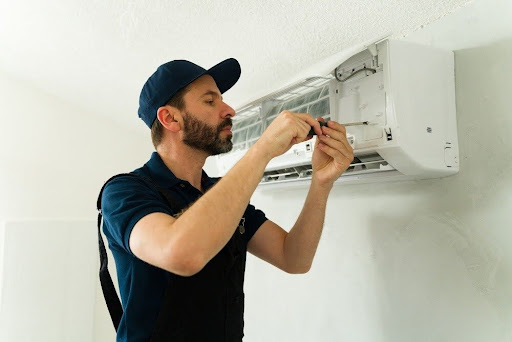Retaining walls are the unsung heroes of landscaping and construction projects, providing essential support in challenging terrains. At the heart of many sturdy retaining walls, you’ll often find an indispensable component: concrete sleepers. Known for their durability and sleek design, concrete sleepers are gaining popularity, especially in regions like Adelaide, where retaining wall industries rely on them heavily for both commercial and residential projects.
However, their effectiveness can only be maintained if they are adequately protected against harsh environmental conditions. Without proper care, the elements can slowly weaken even the toughest materials. This blog will guide you through understanding concrete sleepers in Adelaide and the steps necessary to shield them from weather-related damage.
Understanding Concrete Sleepers
What are Concrete Sleepers?
Concrete sleepers are reinforced concrete beams designed to provide structural support in retaining walls. Their main role is to bear the weight of soil behind a retaining wall and distribute that pressure evenly, ensuring the wall remains upright and stable, according to TXC Realty Management.
Their sleek, industrial design makes them particularly useful and attractive for modern landscaping projects, which explains their popularity in Adelaide’s retaining wall industries.
Benefits of Using Concrete Sleepers
Why do professionals and DIY enthusiasts alike choose concrete sleepers in Adelaide over other materials? Here’s what sets them apart:
- Durability: Concrete sleepers are built to last for decades, withstanding significant weight and environmental stress.
- Aesthetic Appeal: Available in a variety of finishes and styles, they offer a modern touch to your landscaping projects.
- Low Maintenance: Properly sealed concrete sleepers require significantly less upkeep compared to timber or other alternatives.
- Termite Resistance: Unlike timber, concrete sleepers are impervious to pest infestations.
- Sustainability: Many manufacturers use eco-friendly processes and materials, making them an environmentally viable choice.
Environmental Threats to Concrete Sleepers
Moisture and Rain
Consistent exposure to moisture can saturate concrete sleepers. Over time, water infiltrates the tiny pores in the concrete, leading to spalling (crumbling or flaking). This is especially true for retaining walls in areas that experience heavy seasonal rainfall, like certain parts of Adelaide.
Freeze-Thaw Cycles
If water seeps into the pores of the concrete and freezes, it can expand and cause cracks. When temperatures rise, the thawing water recedes, and the process repeats, further weakening the sleeper. This freeze-thaw cycle is particularly damaging in climates with fluctuating temperatures.
UV Exposure
Sunlight isn’t just tough on us; it can degrade concrete surfaces over time. UV rays cause color fading and, in some cases, surface erosion, making your concrete sleepers look worn and reducing their structural integrity.
Chemical Exposure
Chemicals, such as de-icing agents, chlorine, or even certain fertilizers, can eat away at the surface of concrete sleepers. This weakens their resistance to external stresses, which is bad news for your retaining wall’s lifespan.
Sealing Concrete Sleepers: A Step-by-Step Guide
1. Preparing the Surface
Before applying any sealer, it’s crucial to start with a clean and dry surface. Remove dust, dirt, or debris using a stiff brush and clean water. If mold or algae are present, use a mild detergent or specialized cleaner to eliminate them. Make sure the sleepers dry completely before moving to the next step.
2. Choosing the Right Sealer
Not all sealers are created equal. Opt for a high-quality concrete sealer specifically designed for outdoor use and compatible with the finishes of your sleepers. Look for sealers offering waterproofing and UV protection for optimal results in harsh climates, like Adelaide’s.
3. Applying the Sealer
Using a paintbrush, roller, or sprayer, apply the sealer evenly across the surface of the sleepers. Focus on achieving a smooth, uniform coat. Allow the first coat to dry completely (check the manufacturer’s instructions for drying time) and apply a second coat for added protection.
Maintaining Concrete Sleepers
Sealing is just the first step. Regular maintenance is key to ensuring your concrete sleepers continue to perform well year after year.
Regular Cleaning
Keep your concrete sleepers clean by regularly washing them with water and a mild detergent. This prevents dirt buildup and reduces the risk of mold or mildew.
Inspections and Repairs
Inspect your retaining walls and concrete sleepers periodically for signs of cracks, spalling, or discoloration. Address small issues promptly to prevent them from escalating into major problems.
Resealing
Depending on the quality of the sealer and the environmental conditions, resealing may be necessary every 2–5 years. Make it part of your regular maintenance plan to keep your sleepers looking and functioning at their best.
Conclusion
The weather in Adelaide ranges from dry heat to occasional downpours, making it important for homeowners and builders in retaining wall industries to take proactive measures. Properly sealed and maintained concrete sleepers not only enhance the durability of your retaining walls but also ensure their aesthetic value for years to come.









